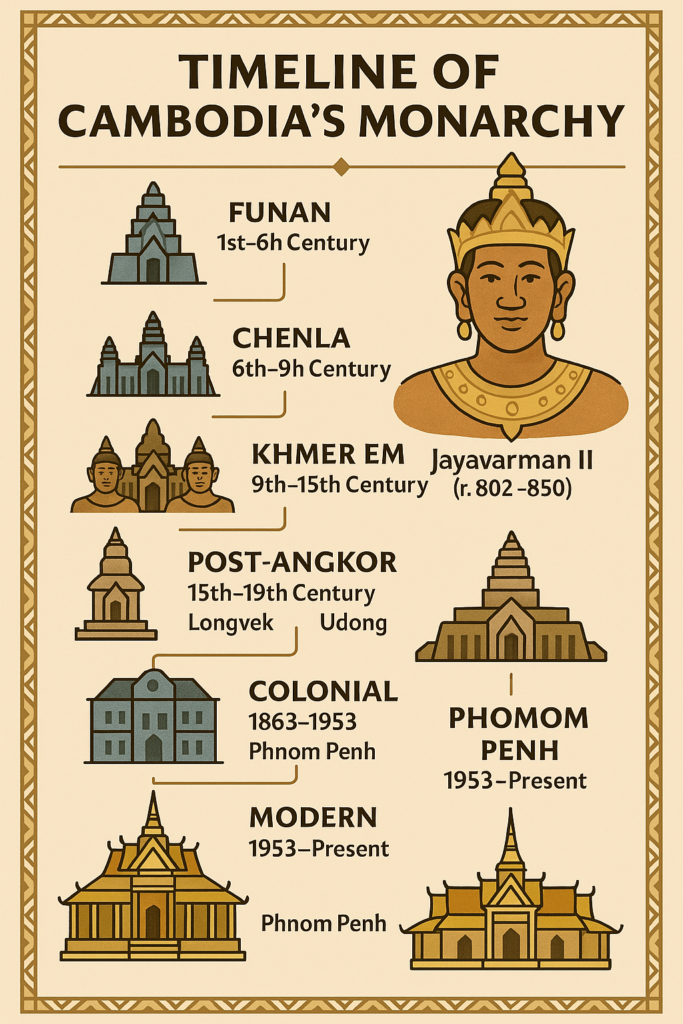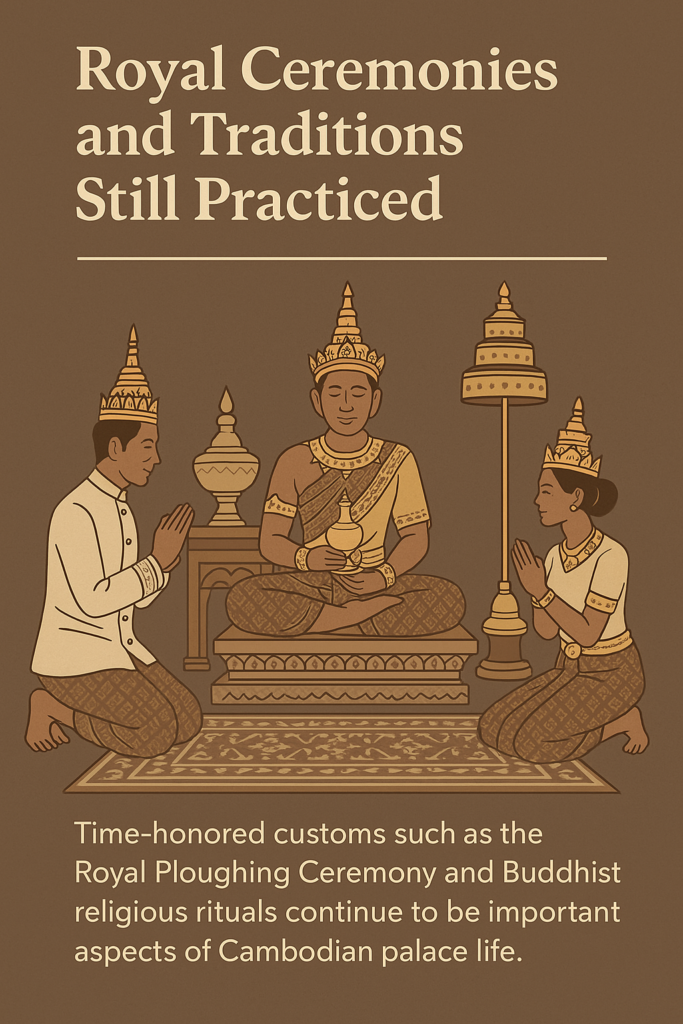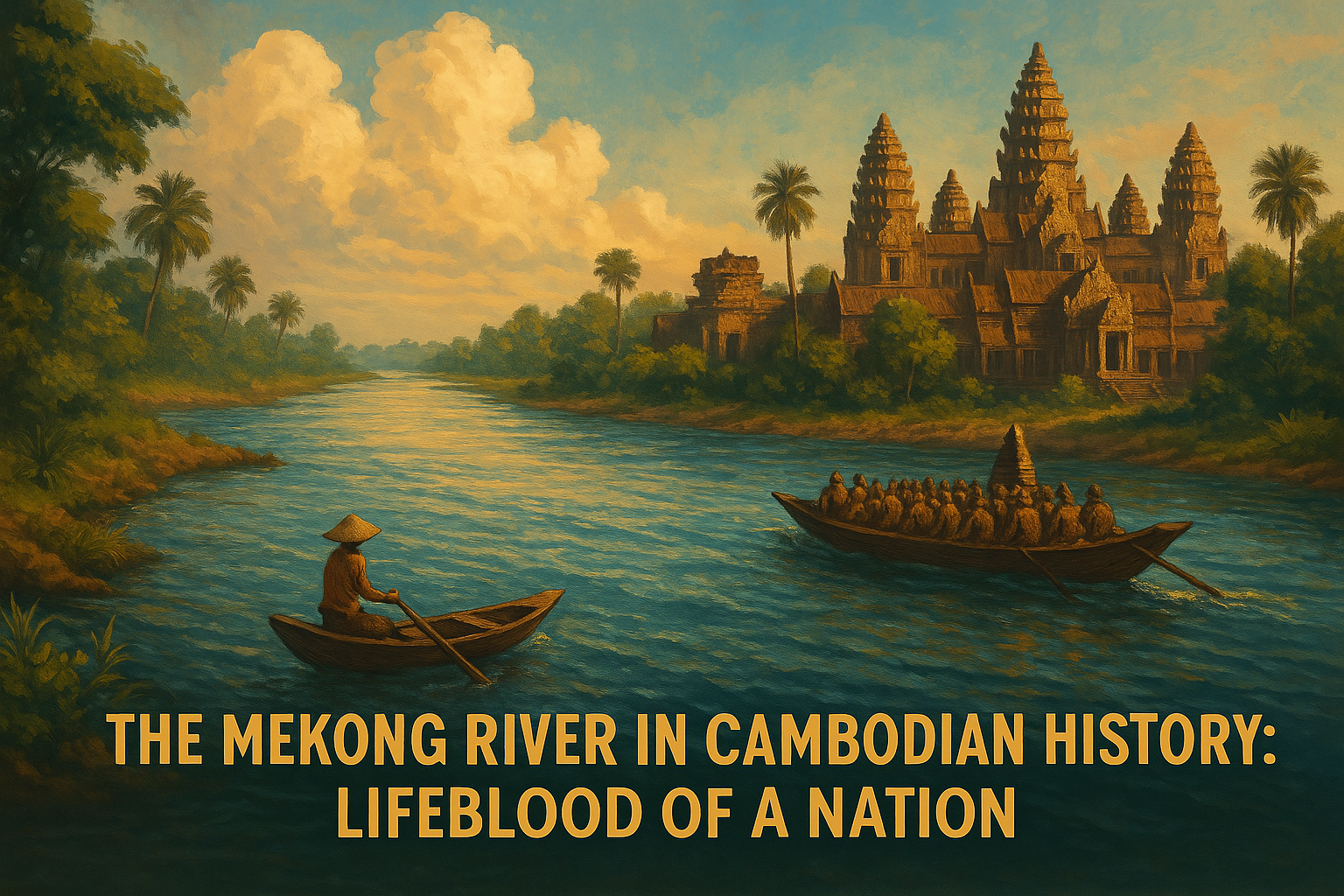
Cambodia’s monarchy is one of the oldest in Southeast Asia, deeply woven into the nation’s cultural, spiritual, and political history. From the god-kings of the ancient Khmer Empire to the symbolic role of the modern constitutional monarch, the royal family remains a powerful symbol of Cambodian identity and continuity.
This article traces the evolution of the Cambodian monarchy—its sacred origins, turbulent past, political transformations, and enduring place in the hearts of the Khmer people.
The History of Cambodia’s Monarchy Through the Ages

The origins of the Cambodian monarchy stretch back over a thousand years, beginning with the early kingdoms of Funan and Chenla. These early rulers claimed divine favor and legitimacy, a tradition that would reach its zenith during the Khmer Empire.
Between the 9th and 15th centuries, Khmer kings like Jayavarman II, Suryavarman II, and Jayavarman VII ruled not just as sovereigns, but as devarāja—god-kings believed to embody Shiva or Buddha. Their power was both spiritual and political, and their temples, like Angkor Wat and Bayon, stand as monuments to this sacred kingship.
Even after the decline of Angkor, Cambodian kings continued to reign, shifting capitals from Longvek to Udong, and eventually to Phnom Penh, adapting to the changing geopolitical landscape of Southeast Asia.
The Role of the King in Ancient Khmer Rule

In ancient Cambodia, the king was more than a political leader—he was the center of the universe. As devarāja, the king was considered a divine being whose duty was to maintain cosmic balance and prosperity.
His responsibilities included:
- Sponsoring temple construction and religious rituals
- Maintaining large-scale irrigation systems
- Leading military campaigns
- Mediating between heaven and earth
The coronation ceremony itself was a sacred rite involving Brahmin priests, where the king symbolically merged with the deity. This fusion of religion and rulership helped ensure loyalty and reverence from the population and legitimized dynastic succession.
The Abolition and Restoration of the Cambodian Monarchy

The Cambodian monarchy endured countless challenges—from foreign invasions and colonial rule to civil wars and revolutions.
In 1863, Cambodia became a French protectorate, and while the monarchy continued under French supervision, real power was increasingly centralized in colonial hands. Yet the royal family remained a symbol of national unity.
In 1970, the monarchy was abolished when General Lon Nol led a coup and declared the Khmer Republic, forcing King Norodom Sihanouk into exile. Under the Khmer Rouge regime (1975–1979), the royal family was targeted, and the institution was almost entirely erased.
However, in 1993, after years of civil conflict and under the framework of the Paris Peace Accords, the monarchy was restored with the return of King Norodom Sihanouk. Cambodia became a constitutional monarchy, and the king resumed his role as head of state—symbolic rather than political.
King Norodom Sihanouk’s Impact on Cambodian Politics

Few figures in modern Cambodian history are as influential—or complex—as King Norodom Sihanouk. Born in 1922, Sihanouk became king in 1941, and over the next six decades, he played multiple roles: monarch, prime minister, president, exile, and ultimately, unifier.
His major contributions include:
- Leading Cambodia to independence from France in 1953
- Promoting a neutral foreign policy during the Cold War
- Founding the Sangkum Reastr Niyum political movement
- Playing a pivotal role in post-conflict peace negotiations
Though controversial in his alliances—he aligned with the Khmer Rouge at one point—Sihanouk is remembered for his charisma, cultural promotion, and unwavering commitment to Cambodian sovereignty.
He abdicated twice, first in 1955 to pursue politics and again in 2004 due to ill health. His son, King Norodom Sihamoni, now reigns as the current monarch.
The Symbolic and Cultural Significance of the Monarchy Today

Today, Cambodia is a constitutional monarchy, where the king holds a largely symbolic and ceremonial role, but remains a deeply respected national figure.
The king serves as:
- A symbol of unity and continuity
- A protector of religion and culture
- A non-partisan moral authority above politics
- A representative figure during state ceremonies and diplomacy
Current King Norodom Sihamoni, a former classical ballet dancer and cultural ambassador, is widely admired for his humility, artistic background, and dedication to humanitarian work.
The monarchy provides a spiritual and cultural anchor for the Khmer people, especially after decades of political upheaval.
Royal Ceremonies and Traditions Still Practiced

Despite modernization, many ancient royal rituals and customs are still observed in Cambodia. These events serve as bridges between past and present, reaffirming the cultural roots of the nation.
Some notable traditions include:
- The Royal Ploughing Ceremony (Pithi Chrat Preah Neangkol): A Brahmin-led ritual that predicts the success of the upcoming agricultural season.
- Royal coronation rites, blending Hindu and Buddhist elements.
- Khmer New Year celebrations involving palace blessings and religious offerings.
- State funerals and cremations were conducted with elaborate royal protocol.
The Royal Palace in Phnom Penh, with its golden spires and sacred relics, remains the ceremonial heart of Cambodia.
Conclusion: A Monarchy of the People, for the Nation
The Cambodian monarchy is not merely an institution of power but a living tradition that embodies the soul of the Khmer nation. It has survived conquest, colonization, abolition, and civil war—only to emerge renewed, redefined, and deeply embedded in the national consciousness.
Today, it stands not as a ruling power but as a cultural guardian, reminding Cambodians of their shared history, resilience, and identity. The royal family continues to serve the country not through politics but through presence—a quiet yet powerful symbol of Cambodia’s past, present, and hope for the future.





